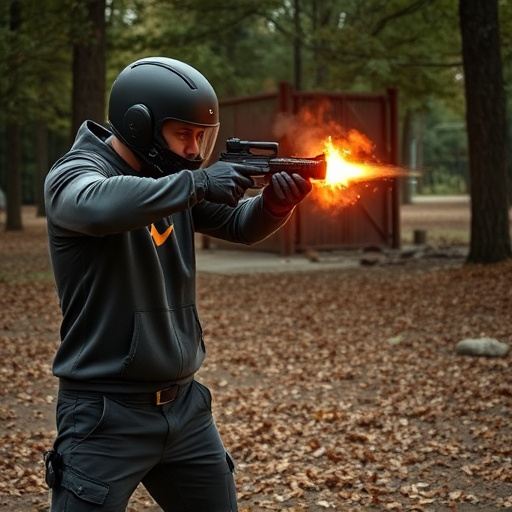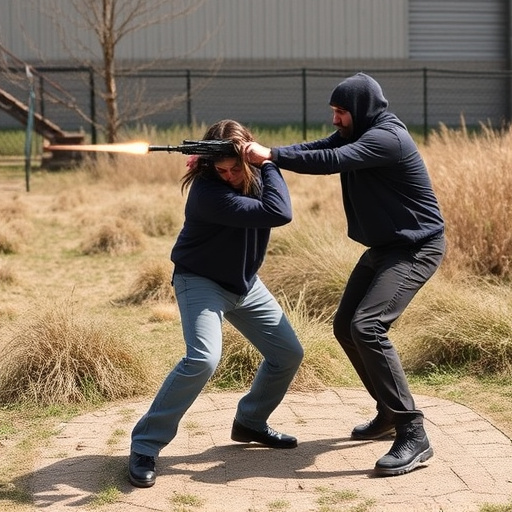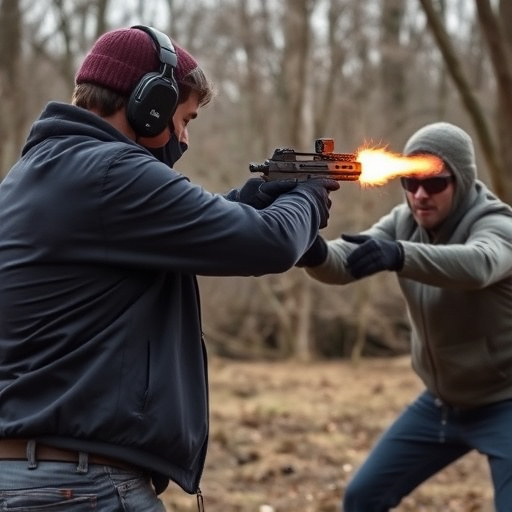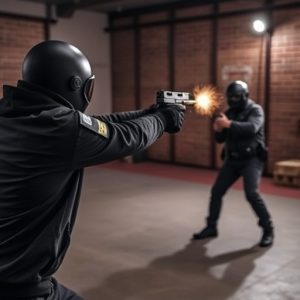Taser vs Stun Gun: Key Differences & Price Range Insights
Tasers and stun guns, both non-lethal weapons, differ in design and impact. Stun guns, more affordab…….
Tasers and stun guns, both non-lethal weapons, differ in design and impact. Stun guns, more affordable (around $20-$300) cause nervous system overload, while Tasers ($500-$1000+) use high-voltage pulses to induce muscle spasms. Price ranges for quality stun guns vary from budget-friendly ($50-$150) to advanced models ($200-$400+), offering different features and power levels. When choosing, consider intended use (law enforcement vs. civilian self-defense) and local laws, as regulations differ between Tasers and stun guns. Safety is crucial; stun guns fire darts for skin contact, while Tasers deliver current directly into the body. Always research local legalities and consult experts before purchasing.
In today’s world, self-defense tools like Tasers and stun guns offer individuals a sense of security. However, understanding their nuances is crucial. This article delves into the differences between Tasers and stun guns, exploring key distinctions in their operation, effects, price range for quality models, and ideal use cases. By considering safety considerations and legal implications, readers can make informed choices to protect themselves effectively.
- Understanding Tasers and Stun Guns: A Brief Overview
- Key Differences Between Tasers and Stun Guns
- Price Range for Quality Stun Guns
- Application and Use Cases: When to Choose Each
- Safety Considerations and Legal Implications
Understanding Tasers and Stun Guns: A Brief Overview

Tasers and stun guns are non-lethal weapons designed to temporarily incapacitate a target, providing a crucial tool for self-defense and law enforcement. Both operate by delivering an electric shock, but they differ significantly in their design, functionality, and impact. Tasers, officially known as Electronic Control Devices (ECDs), fire two thin probes connected to wires that deliver a high-voltage, low-current electrical pulse, causing muscle spasms and disorientation. In contrast, stun guns generate a continuous electric discharge through a metal probe or tip, overloading the target’s nervous system in a similar manner.
When considering these tools, it’s essential to understand their price range for quality options. Stun guns are generally more affordable, with entry-level models starting from as little as $20 to $30, offering basic functionality and suitable for personal defense. Tasers, on the other hand, tend to be more expensive due to their complex design and advanced technology, with prices ranging from $500 to over $1000 for high-end models used by law enforcement and professional security personnel. Despite price differences, both stun guns and tasers provide effective means of self-defense when used appropriately, emphasizing the importance of understanding local laws and regulations governing their possession and use.
Key Differences Between Tasers and Stun Guns

Tasers and stun guns are both non-lethal weapons designed to incapacitate an assailant, but they operate on distinct principles. Tasers use electrical current to disrupt muscle control, causing the target to fall to the ground momentarily. This makes them highly effective for crowd control or neutralizing armed individuals who might otherwise pose a threat. On the other hand, stun guns emit a strong electric shock designed to overload the nervous system, rendering the target temporarily unconscious. While both tools can be powerful, they differ significantly in terms of operation and application.
In terms of price range for quality stun guns, there’s a wide variation based on features, power output, and build quality. Stun guns are generally more affordable than tasers, with entry-level models starting from as little as $50 to $100. However, high-end stun guns with advanced safety features, longer battery life, and stronger jolts can cost upwards of $300 or more. Tasers, due to their complex design and regulatory status, typically fall into a higher price bracket, often ranging from $300 to $600 for quality models, with some specialized or law enforcement-grade tasers costing significantly more.
Price Range for Quality Stun Guns

When considering a stun device, one of the primary factors to evaluate is the price range for quality stun guns. High-end models can cost anywhere from $200 to $400 or more, offering advanced features and robust construction. These devices often incorporate powerful electric outputs, durable materials like metal, and sophisticated safety mechanisms. On the other hand, budget-friendly options typically fall in the range of $50 to $150, providing a more basic level of protection with simpler designs and lower voltage levels.
The price gap reflects differences in quality, reliability, and performance. Higher-priced stun guns often boast longer battery life, brighter LED lights for better visibility during emergencies, and advanced features like multiple shooting modes. They may also be designed with ergonomic grippers for easier handling and a higher degree of comfort during use. Understanding the price range for quality stun guns can help buyers make informed decisions based on their specific needs and budget constraints.
Application and Use Cases: When to Choose Each

When deciding between a Taser and a stun gun, understanding their unique applications is key. A Taser, with its ability to deliver powerful electrical pulses, is primarily designed for law enforcement and self-defense scenarios where immobilizing an individual is crucial. It’s effective at creating temporary muscle paralysis, allowing users to gain control in potentially dangerous situations.
Stun guns, on the other hand, are more accessible to civilians due to varying legal restrictions. They function by delivering a strong electrical shock, causing the target to experience intense pain and disorientation. Stun guns are ideal for personal safety, especially during encounters with potential assailants or when facing physical threats. When considering which to choose, budget is also a significant factor; quality stun guns can range from affordable options under $50 to more advanced models costing up to $300 or more, depending on features and power output.
Safety Considerations and Legal Implications

When comparing Tasers and stun guns, safety considerations are paramount. Both devices operate by delivering an electric shock to incapacitate a target, but they differ significantly in their design, deployment, and potential side effects. Stun guns typically fire small darts that make contact with the skin, triggering a powerful jolt of electricity. This method is often considered safer because it doesn’t always result in full body contact, reducing the risk of cardiac arrest or other severe health complications. In contrast, Tasers use probes to deliver an electric current directly into the target’s body, potentially causing more significant physical harm and side effects like muscle contractions, falls, and even respiratory distress.
The legal implications of carrying and using either device vary widely depending on jurisdiction. Stun guns are generally less regulated, with many regions permitting their possession for self-defense purposes as long as they meet certain criteria, such as power output limitations. Tasers, however, often fall under stricter regulations due to their potential for more severe consequences. The price range for quality stun guns can vary greatly, from affordable models aimed at the consumer market to specialized tactical options that cater to law enforcement and security professionals. It’s crucial for individuals considering purchasing either device to thoroughly research local laws and consult with legal experts to ensure compliance and safety.
In comparing tasers and stun guns, understanding their distinct capabilities and uses is key. Tasers excel in delivering powerful jolts for neutralizing aggressive individuals, while stun guns offer a more conventional approach with shorter ranges and faster de-escalation times. When considering a purchase, the price range for quality stun guns varies widely, but investing in a reliable device can ensure personal safety in various situations. Always prioritize safety and adhere to legal implications when choosing between these self-defense tools.


